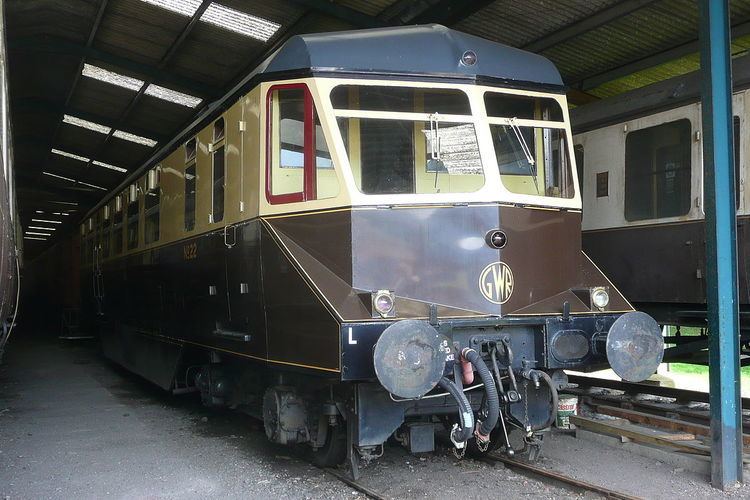In service 1934–1962 Number built 38 cars | Constructed 1934–1942 Number preserved 3 cars | |
 | ||
Operator(s) Great Western RailwayBritish Rail (Western Region) | ||
In 1933, the Great Western Railway introduced the first of what was to become a very successful series of railcars, which survived in regular use into the 1960s, when they were replaced with the new British Rail "first generation" type diesel multiple units.
Contents
Bodywork
The original design featured 'air-smoothed' bodywork, which was very much the fashion at the time. The rounded lines of the first examples built led to their nickname: "flying banana". The preserved W4W is an example of the original, rounded body shape. Later examples, such as No. 22 (pictured), had much more angular (and practical) bodywork, yet the nickname persisted for these too.
Heating
An odd feature of these units was the fitting of steam heating to them, which had the power to heat the railcar and another two to three coaches.
Powertrain
An unusual feature was the external cardan shaft drive from the gearbox on the rear of a horizontally mounted engine to road-vehicle style reduction boxes outboard of the two axles on one bogie. Later units had two such engine and drive combinations placed on opposite sides. Railcars 19-20 were fitted with a separate high-low ratio gearbox on the final drive side of the gearbox. This allowed a top speed of about 60–70 mph (97–113 km/h) in high and about 40–45 mph (64–72 km/h) in low. Railcar W20W retains this in preservation.
Preservation
Three of the GWR railcars have survived into preservation, as follows:
Models
Hornby Railways manufacture a model of the 1940-style railcar in OO gauge, using tooling acquired in their takeover of Lima.
